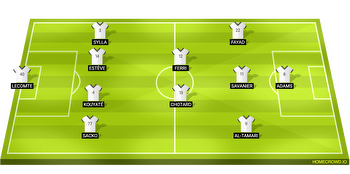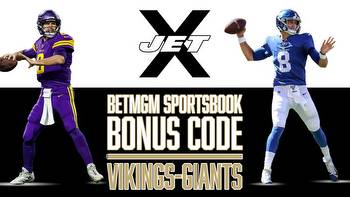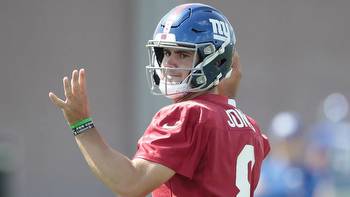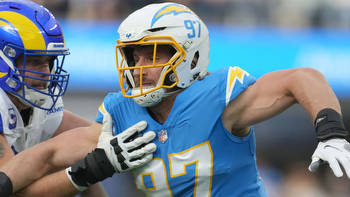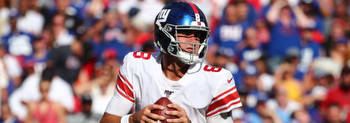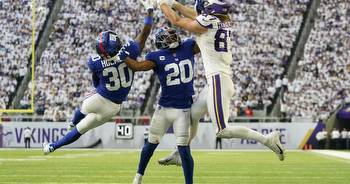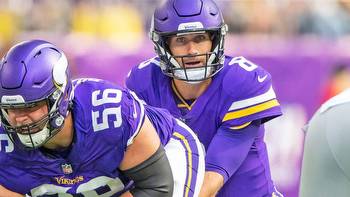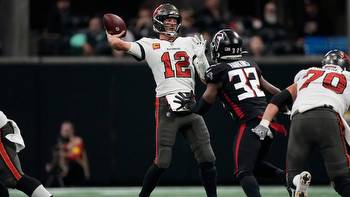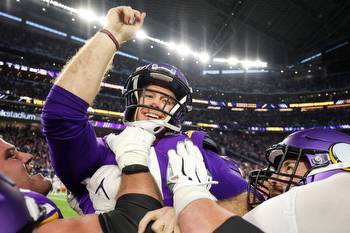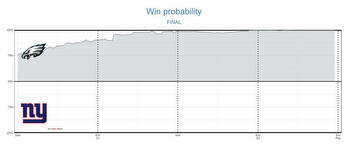Did Sunday’s Losses Show Who the Jets, Vikings, and Giants Really Are?
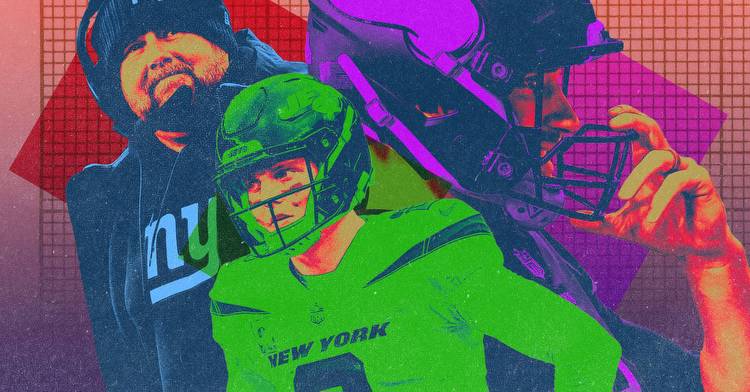
The haters and skeptics had been waiting for a day like Sunday. I know, because I was one of them. The NFL’s three biggest surprise teams of 2022—the Jets, Giants, and Vikings—all came into the week at least three games over .500 and with postseason odds sitting above 60 percent, according to Football Outsiders. And then they combined for 24 total points in three rough losses.
Now the Jets are in last place in the AFC East. The Giants are also nearing the divisional basement as Washington continues to surge. And while the Vikings remain atop a bad NFC North, they’re now the proud owners of a negative point differential, which tends to be a better predictor of future performance than a team’s actual win-loss record. These teams are a collective 21-9, but there isn’t a fan in New York or Minnesota who can feel very good about them after what we saw on Sunday.
And that’s not the only thing these teams have in common: They’re all also headed for awkward conversations about their quarterbacks this offseason, and there’s a non-zero chance all three have a different starter under center in 2023. So let’s check in on the Jets, Vikings, and Giants, and try to figure out where each of these teams are headed in the short term—and what that might mean for their long-term outlooks.
New York Jets
If your franchise has questions about its young quarterback, there isn’t a better (or worse, depending on how you look at it) way to check in on their progress than by taking on a Bill Belichick–coached defense. Zach Wilson and the Jets did that on Sunday, and in a 10-3 loss, Wilson provided his team with a blunt answer: He isn’t their guy.
Roll the footage.
No, not that footage. We’ll get to that later. I’m talking about this:
That was brutal. And things get even uglier when you watch from the all-22 angle, where you can see Wilson sabotaging the Jets offense in ways that aren’t so obvious from the traditional broadcast.
Wilson finished with 77 yards on 22 attempts. Including yardage lost on sacks, the Jets passing game produced a net of 44 yards against the Patriots. That’s how you lose a game in which your defense surrenders only three points. And that makes that first clip all the more damning. Wilson may not feel like he’s letting a very good Jets defense down, but that feeling clearly isn’t mutual.
We’re officially in the “bad vibes” zone with Wilson now, which feels like the beginning of the end for him and what started out as a promising season. Usually when a highly drafted QB busts this quickly, it’s easy to blame the infrastructure of the roster and/or coaching staff, but that’s not what’s going on here. Wilson is surrounded by a young but decent set of options in Garrett Wilson, Corey Davis, Elijah Moore, and the now-injured Breece Hall. Offensive coordinator Mike LaFleur had done everything in his power to coach around Wilson’s limitations prior to this week, and he was doing a fine job of it before injuries to Hall and Alijah Vera-Tucker considerably raised his degree of difficulty.
Before Sunday’s stinker in New England, Wilson’s clean pocket splits had offered some bit of encouragement to Jets fans still holding out hope that the second-year QB had a chance to turn things around. Wilson had been historically bad under pressure, but had been PFF’s eighth-highest-graded passer on unpressured dropbacks through 10 weeks. Even that was taken away against the Pats. On 15 unpressured dropbacks, Wilson completed 28.6 percent of his passes and averaged just 2.8 yards per play with a success rate of 13.3 percent. Even in the most ideal conditions, the Jets quarterback was lost.
Things eventually got so bad there was a spike in search traffic for Joe Flacco, who wasn’t even active for the Jets this weekend, at 4 p.m. ET on Sunday, followed by another one Monday morning. Jets coach Robert Saleh says he’s sticking with Wilson for the rest of the season, barring injury, but it appears the fans already have moved on. It’s only a matter of time before the coaching staff joins them. This current version of Wilson—who can’t operate as a dropback passer and is struggling to make the easy, schemed up throws, too—is not a viable NFL player. He doesn’t have a tool the Jets can craft the offense around at the moment. And unless the defense takes matters into its own hands and starts scoring, New York has no other cards to play.
The Jets are 6-4 and their odds of making the playoffs have dropped to 46 percent, per FiveThirtyEight. They have three games coming up against division leaders, plus a trip to Buffalo and games against feisty Jags and Lions teams. I think we all know how this ends: With the Jets missing the playoffs and hopping right back into the QB market in the offseason.
Minnesota Vikings
FORTY TO THREE! Sorry, I just had to get that out of my system.
The Vikings were among the chief contributors to Sunday’s slate of unwatchable football, but I do appreciate them putting an early end to the debate over whether they were Super Bowl contenders. I don’t want to overreact to one game, but when it’s a 37-point loss at home to a merely “good” Cowboys team, it’s kind of hard not to.
At 8-2, Minnesota’s season is far from over, but whatever optimism was created by last week’s win in Buffalo was immediately erased by Sunday’s blowout defeat—mostly because the Vikings were bad in all the ways we feared they might be. The Cowboys figured out a way to contain Justin Jefferson; the offensive line couldn’t protect Kirk Cousins (before or after Christian Darrisaw left the game with an injury); and rookie head coach Kevin O’Connell still hasn’t gotten his Sean McVay–inspired scheme to operate as designed. And that’s just the offense. The defense, which had put up decent results early in the season by mostly playing soft zone coverages against a rogues’ gallery of bad backups, had no answer for a playoff-caliber quarterback like Dak Prescott.
The Vikings have plenty of issues outside of the quarterback position, but the conversation about their chances of going on a playoff run starts and ends with Cousins, who is now on pace to have his worst statistical season—by EPA, yards per dropback, success rate, and just about any other relevant metric—since his first two years in Washington. And he’s failing in ways we’ve never really seen him fail before. Minnesota’s play-action passing game is producing a negative EPA for the first time since Cousins arrived, and he’s actually been better in obvious passing situations than he has on early downs, when the defense has to account for the run game. This feels an awful lot like the Bengals offense last season, which had become entirely dependent on Joe Burrow throwing amazing deep passes to Ja’Marr Chase and Tee Higgins; only Cousins can’t consistently make the plays Burrow does against pressure, and Cincinnati had two star wideouts at its disposal, so it worked.
Ironically, Cousins has been more willing to use his legs to create and to push the ball downfield this season, which had previously been the issues that critics had with his game. If you dropped this version of Kirk onto the 2019 Vikings team that won a playoff game, it might be a contender. But this group just can’t provide the schematic safeguards that a limited quarterback like Cousins requires—and the more aggressive approach has led to an increase in negative plays. According to Pro Football Focus, Cousins’s turnover-worthy play rate is the highest it’s been since 2015, when he was nearly benched early on before breaking out in the second half.
With the run game producing mediocre results, and the play-action passing game not creating explosives, the Vikings need Cousins to play like a star quarterback if they’re going to compete for a title this season. And to his credit, he’s trying! He lacks the juice to do it for a full 60-minute game every week.
Even after the embarrassing loss to Dallas, the Vikings are still in good shape. Green Bay’s loss on Thursday essentially wrapped up the NFC North race and ensured Minnesota will be playing a home playoff game in January. But if O’Connell and Cousins don’t find answers to their early-down problems over the next six weeks, it’s hard to imagine this team playing beyond that. We’ve already seen Cousins fail to carry Minnesota beyond that point when he was asked to be more of a system quarterback. We’re looking at a similar conclusion now that he’s carrying more of the playmaking burden.
First-year general manager Kwesi Adofo-Mensah made waves in the offseason by saying the Vikings “don’t have a Tom Brady … don’t have a Patrick Mahomes,” and acknowledging that it’s hard to win a Super Bowl without one of those quarterbacks. Cousins is proving, once again, that he’s not in that class—but his $36.3 million cap hit for 2023 suggests otherwise. Unless Adofo-Mensah has changed his scouting report of Cousins, Minnesota can’t be all that enthusiastic to be the one signing his checks a year from now—and the Vikings could avoid a massive cap penalty by trading him in the offseason, while also adding a premium draft pick or two in the process.
New York Giants
“You cannot lose games in the NFL and still win,” former quarterback Trent Dilfer once said, in a clip that went viral for obvious reasons. But as nonsensical as that statement may sound, it’s really the perfect way to explain how the Giants, a team we all assumed would be tanking in 2022, got to 7-2. It’s also a good way to explain how they fell to 7-3 following a sobering 31-18 loss to Dan Campbell’s Lions.
Brian Daboll’s team, which had mostly avoided penalties and turnovers this season, made up for lost time on Sunday. It was flagged eight times, and Daniel Jones threw two brutal interceptions in a game that wasn’t very competitive in the second half. The turnovers will be all anyone focuses on after the loss, and for good reason. Jones has been too loose with the ball throughout his career, so anytime we see a return of Bad Daniel, it can be difficult to ignore. But outside of those plays, Jones was hardly the problem. The Giants couldn’t run the ball when Jones wasn’t involved in the play design—mostly because Detroit was selling out to stop Saquon Barkley—and Don “Wink” Martindale’s defense was gashed in the run game, which made things easier for Jared Goff. Whichever of these teams was going to be able to run the ball was always going to win the game.
That may sound like an indictment of Jones, but it’s really an indictment of the Giants’ receiving corps, which is incapable of posing a threat to opposing secondaries. That’s why we’ve seen Daboll lean so heavily on the run game and do everything in his power—whether it’s getting Jones involved or spamming wildcat runs for Barkley—to gain a numbers advantage in the run box. But despite the lack of talent on the perimeter, this offense has been more than viable this season, thanks in large part to Daboll’s creative run game and Jones’s role in it.
As far-fetched as it may have sounded before the season, Jones might be the one quarterback from the three teams we’ve talked about here who will keep his job in 2023. As a runner alone, he provides a value that can be hard to find. And with him improving as a passer and decision-maker—Sunday’s performance notwithstanding—it’s going to be hard for the Giants to just move on unless they’re able to land a bigger name in the offseason. In hindsight, New York’s decision not to pick up Jones’s fifth-year option was probably a mistake. The Giants could have locked him down for next season for about $22 million, and that would have made it easier for the front office to negotiate a cost-effective multiyear deal depending on his performance. Now, barring a long-term financial commitment, the Giants will likely have to use the franchise tag, which would pay Jones north of $30 million, or the transition tag, which would save them a few million bucks, to keep Jones in town for another season.
That doesn’t sound like the best plan, but I’m not sure there will be a better alternative. It looks like Aaron Rodgers will stay in Green Bay for at least one more year, and there’s no way Seattle lets Geno Smith walk next spring. Lamar Jackson is slated to hit free agency, but Baltimore won’t let that happen, either. So unless New York wants to send a premium draft pick to Las Vegas for Derek Carr, or take a ride on the Jimmy Garoppolo roller coaster, they might be stuck with Jones.
The Giants are still in a good spot even after Sunday’s loss. Splitting the next two games against Dallas and Washington would give them at least a 55 percent chance of making the playoffs, per FiveThirtyEight’s prediction model, and this team matches up well with the Eagles on paper, so there’s still an outside shot it will get back into the NFC East race. If Jones can get the Giants to the playoffs, and the offense maintains its status as a top-10 unit by EPA, moving on from this quarterback will be even harder for a team that would be drafting in the back half of the first round.
But if that’s going to happen, we’ll need to see an improvement out of Martindale’s defense, which now ranks 22nd in EPA allowed, per RBSDM.com, and may have to carry more of the load if other defenses are able to copy the strategy that rendered Barkley ineffective on Sunday. There isn’t an especially high ceiling for the Giants on either side of the ball, given their personnel shortcomings. But somewhat surprisingly, that’s not because of the quarterback position.

